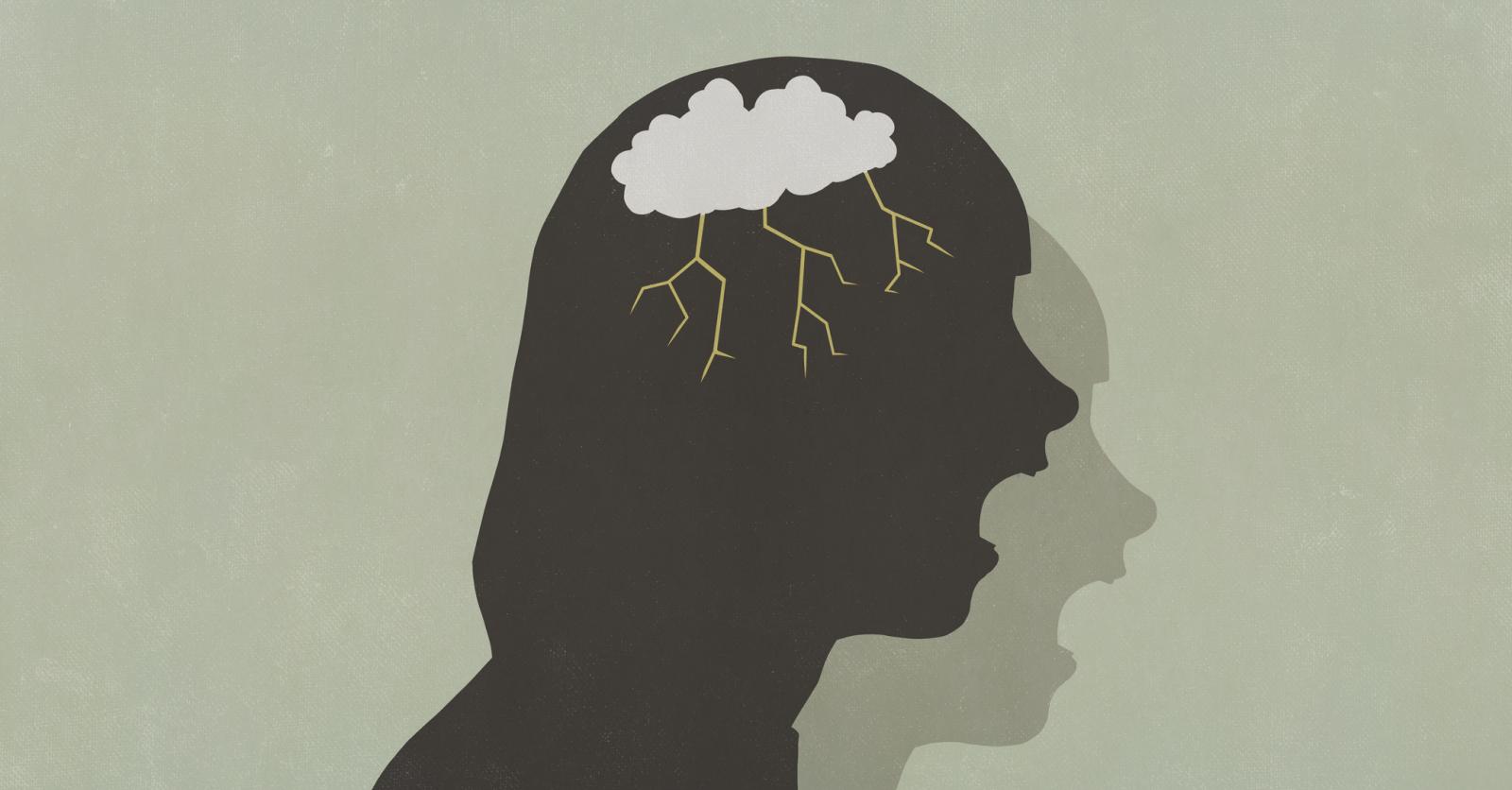‘I was really traumatized by that.’ These are words that we use quickly and often these days. Unjustly? Professor, trauma expert and author Jim van Os debunks six popular myths about trauma.
1– Trauma can only be caused by severe abuse, prolonged abuse or brutal violence.
Jim Van Os: “One in four Dutch people come into contact with trauma in the course of their lives. The reasons for this are very diverse, and not always earth-shattering. For example, your teenage son may be traumatized when his friends kick him out of the WhatsApp group, just as someone else is traumatized from years of abuse. What those events have in common is that they have a great emotional or physical impact. They are things that overwhelm you so much that you are transfixed. Your normal defense mechanisms fail. You feel powerless, your integrity and even your entire worldview are compromised. These are events that hit like a bomb, even if their impact sometimes only becomes clear years later.”
2- You carry a trauma with you all your life, you never really get rid of it.
“The symptoms of trauma are as diverse as its causes. We often get people over the floor with vague complaints: insomnia, anxiety, joint pain, stress, hair loss. It is perfectly possible to suffer a trauma without being aware of it. In order to function normally, people tend to push painful things into the background. Often that works quite well. Repressing, however, is not the same as neutralizing. Another event, sometimes years later, can trigger that trauma, with all its consequences. If you manage to find the cause of your feeling in such a case, you can work on recovery. We call that traumatic growth. That is of course less simple than it sounds. It usually takes a long way to get to that point. Trauma therapy is tailor-made. There is no one-size-fits-all solution. System therapy, psychotherapy, body-oriented movements, EMDR, group therapy: these are all things that can help you, but will not necessarily help you. You have to find out for yourself what works for you and what fits your world view.”
3- People with trauma benefit from antidepressants.
“The problem with antidepressants is that they work brilliantly on a very small group of people. But for the lion’s share of people, they do nothing at all: they mainly create side effects and dependence. The threshold for prescribing such drugs should really be much higher. In the past, trauma was seen as a disease that needed to be diagnosed and treated. You run the risk of excessive medicalization or passive victimization. “The doctor will give me a pill, the psychologist a treatment.” Fortunately, that idea is now changing. Biological research into trauma is actually quite disappointing: you cannot deduce someone’s worldview from brain scans.”
“Currently, psychological suffering is seen as part of human development. Everyone comes into contact with pain and sadness, but the search for the cause is hyper-personal. If you notice that something lingers longer or that you start to exhibit atypical behavior, take it as an invitation to work on yourself. Why do you get out of bed in the morning with a sigh? Or why do you suddenly hate your job so much? Searching for the answers to those kinds of questions is positive, it means that you look for depth and work on your resilience. You actively look for ways to deal with the bad things that happened to you.”
4- Trauma is a mental problem.
“Trauma is a mental and a physical disorder. The human body has an enormous capacity to adapt. If you move from a cold to a warm area, you will notice that the internal thermometer regulates itself. This also applies to people who grow up in poverty or babies who are neglected. You can see this in glucose tolerance, metabolism, blood pressure, stress regulation and genes, for example. Due to circumstances, certain parts of your genes can be switched on or off. These processes already start during pregnancy. The babies that were in the womb during the hunger winter in the Netherlands after the Second World War were exposed to a lot of stress. Later in life they have very different physical outcomes than average babies.”
“It is also true that talking about trauma does not work for many people, precisely because the physical aspect plays such a major role. That is why body-oriented therapies, such as dance or animal therapy, are often a good starting point.”
5- Trauma is a hyperpersonal disorder that also needs to be treated on a personal level.
“Although the success of trauma therapy strongly depends on the individual, the social context plays a very important role in the processing of a trauma. We see this very clearly in research with war veterans who follow group therapy. Contact with experts by experience can be incredibly healing, because you feel less like you’re on your own. Rituals that affect consciousness processes can also bring salvation. People with trauma suffer from a distorted consciousness, and a ritual can pull you out of that and connect you with others. Sounds woolly, but the now very popular EMDR therapy is also a kind of ritual.”
“The social context is also an important factor in the development of trauma. Epidemiological research shows that about 20 percent of Dutch young people suffer from a mental disorder. That is almost twice as many as twenty years ago. If we look at the causes, it appears that many young people suffer existentially: they do not find their footing in this world. And that in turn has to do with the fact that we are under considerable pressure in this neoliberal society. We have adapted our social structures to market thinking. We have all become a kind of product that we always have to optimize. Our existence largely takes place on a screen, resulting in great loneliness and emptiness. Neoliberal baldness has replaced human connection, leaving young people more vulnerable to trauma.”
6- There are three possible responses to traumatic events: fight, flight, or freeze.
“That’s right, but many people forget that there is also a fourth defense mechanism: the glue reaction, also known as Stockholm syndrome. Victims of violence or sexual abuse will try to please their tormentor as much as possible to keep themselves out of the wind. You may end up internalizing and repeating that behavior, by entering into a relationship with a tormentor over and over again, or, much more subtly, through consistent benevolence and forgetting your own boundaries in relationships. Be alert to that kind of behavior in yourself and in partners, it can be a sign on the wall.”
Jim van Os is a Dutch professor of psychiatry and chair of the Brain Division of the University Medical Center Utrecht. He is visiting professor at the Institute of Psychiatry at King’s College London. Recently wrote the book together with Simona Karbouniaris Understanding Trauma in 33 Questionswhich was issued at Lanno Campus.
2023-08-16 18:00:26
#myths #trauma #presented #expert #Jim #van #earthshattering

:strip_icc()/s04.video.glbimg.com/x720/11863315.jpg)
